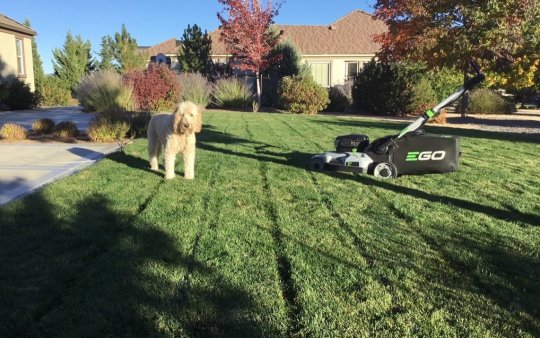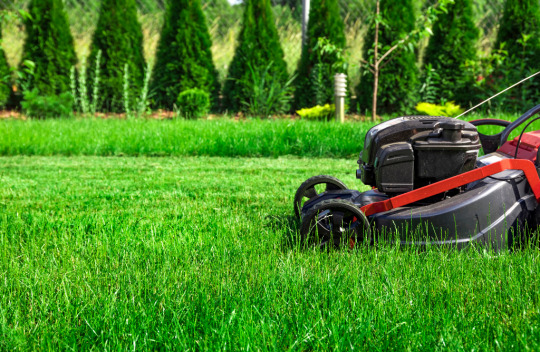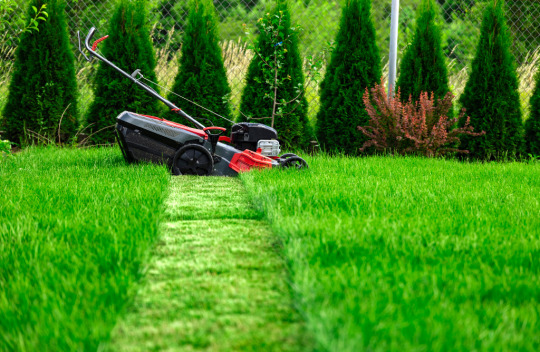At LawnAsk, we’re passionate about lush, vibrant lawns that transform your outdoor spaces into inviting havens. We understand that a well-maintained lawn is a canvas of natural beauty and a source of pride for homeowners.
Don't wanna be here? Send us removal request.
Text
The Role of Technology in Elevating Lawn Care Standards
In the ever-evolving landscape of lawn care, technology plays a pivotal role in transforming traditional practices and elevating standards to new heights. As we embrace the digital age, the integration of cutting-edge technologies has revolutionized the way we approach lawn maintenance, bringing efficiency, sustainability, and precision to the forefront.

Image Source: gailwilley.com
Smart Irrigation Systems: Nurturing Lawns with Precision
One of the groundbreaking advancements in lawn care technology is the introduction of smart irrigation systems. These systems leverage real-time data, weather forecasts, and soil conditions to optimize water usage. By delivering precise amounts of water to specific areas, smart irrigation promotes water conservation and ensures that lawns receive the exact nourishment they need for optimal growth.
Robotic Lawn Mowers: Unleashing Automation for a Pristine Lawn
Say goodbye to the days of pushing a heavy lawn mower under the scorching sun. Robotic lawn mowers have emerged as game-changers in the quest for a perfectly manicured lawn. These autonomous machines use sensors to navigate the terrain, avoiding obstacles and adjusting cutting patterns based on the grass length. The result is a consistently well-maintained lawn with minimal effort from the homeowner.
Precision Agriculture Techniques: Tailoring Solutions for Every Lawn
Adopting precision agriculture techniques in lawn care has brought a customized approach to the forefront. Soil sensors, GPS technology, and data analytics enable professionals to assess the unique needs of each lawn accurately. This tailored approach ensures that fertilizers, pesticides, and other treatments are applied strategically, minimizing environmental impact while maximizing results.
Mobile Apps for Lawn Maintenance: Putting Control in Your Hands
In the era of smartphones, mobile apps have become indispensable tools for homeowners and lawn care professionals alike. These apps offer real-time weather updates, personalized lawn care schedules, and even virtual consultations with experts. Users can now monitor their lawn's health, receive timely reminders for maintenance tasks, and access a wealth of information to make informed decisions about their landscaping.
Drones in Lawn Inspection: A Bird's Eye View for Enhanced Analysis
Drones have transcended their recreational use and found a niche in the lawn care industry. Lawn care professionals now utilize drones to conduct aerial inspections, providing a comprehensive view of the entire property. It expedites the assessment process and allows for early detection of pest infestations, disease outbreaks, or uneven growth patterns.
Conclusion:
As technology continues to weave its way into every facet of our lives, lawn care is no exception. Integrating smart systems, automation, precision agriculture, mobile applications, and drones has ushered in a new era of efficiency and sustainability. By embracing these technological advancements, homeowners and professionals alike can elevate lawn care standards, ensuring lush, vibrant lawns that are aesthetically pleasing and environmentally responsible. Embrace the green revolution powered by technology, and witness your lawn flourish like never before.
0 notes
Text
Your Grass, Your Rules: How to Decide on the Ideal Mowing Height
The selection of the ideal mowing height is vital for maintaining a healthy and attractive lawn. Proper mowing height can greatly influence the overall appearance and well-being of your grass. This article will explore the significance of choosing the right mowing height, its impact on the health of your grass, and offer essential tips for achieving a well-maintained appearance.

Why Does Mowing Height Matter?
Mowing height is more than just a matter of aesthetics. It directly impacts the overall health and resilience of your lawn. Here are some of the key reasons why it's essential to choose the right mowing height:
Root Development
The length of your grass blades is closely connected to the depth and strength of the grassroots. Taller grass means deeper roots, which can help your lawn better withstand drought, disease, and other environmental stressors.
Weed and Pest Control
Taller grass acts as a natural weed suppressor, shading out potential invaders. It also provides a less appealing environment for certain pests. Proper mowing height can be a part of your integrated pest management strategy.
Photosynthesis
Grass blades are the food factories of your lawn. The longer they are, the more surface area they have for photosynthesis, which leads to healthier grass.
Drought Resistance
Shorter grass exposes the soil to more sunlight and increases water evaporation. Taller grass can help retain soil moisture, especially during dry spells.
How to Determine the Right Mowing Height
The appropriate mowing height for your lawn is determined by the type of grass you have. Cool-season grasses like Kentucky bluegrass and fescue have different height requirements than warm-season grasses such as Bermuda and zoysia. Here's how to determine the right mowing height for your specific grass type:
Identify Your Grass Type
Start by identifying the type of grass in your lawn. You can consult with a local nursery, use a grass identification guide, or seek assistance from a professional lawn mower landscaper.
Research Ideal Height
Typically, cold-season grasses should be mowed to a height between 2.5 and 3.5 inches, while warm-season grasses are ideally maintained at 1 to 2.5 inches.
Gradual Adjustment
If your grass is currently being mowed significantly shorter or longer than the recommended height, make gradual adjustments. Sudden, drastic changes in mowing height can stress your lawn.
Adapt to Seasonal Changes
Mowing height can vary throughout the year. During the active growing season, your grass may be mowed slightly higher, while in the dormant season, a lower mowing height is often more appropriate.
Proper mowing height is crucial for maintaining a beautiful and healthy lawn. It is important to understand the type of grass you have, research the recommended mowing height, and follow best practices. By setting your mower to the appropriate height, you can greatly improve the appearance and lifespan of your lawn.
0 notes
Text
Mowing: Tips for Achieving the Perfect Cut
Achieving the ideal mowing height is just the beginning. Here are some additional tips to ensure you get the best results when caring for your lawn:

Sharpen Your Blades: Dull mower blades can tear the grass instead of cleanly cutting it. Sharpen your mower blades regularly for a clean, healthy cut.
Follow the One-Third Rule: Never remove more than one-third of the grass blade's height in a single mowing session. This practice ensures you don't stress your lawn.
Mow When Dry: Mow your lawn when the grass is dry. Wet grass can clump and clog your mower, leading to an uneven cut.
Alternate Mowing Patterns: Change your mowing direction each time to prevent soil compaction and create a more even appearance.
Leave Grass Clippings: Grass clippings can act as natural mulch, returning essential nutrients to the soil. Consider using a mulching mower to finely chop the clippings.
Adjust Mowing Frequency: Mow more frequently during the growing season and less often during periods of slower growth.
By following these tips and maintaining the appropriate mowing height for your grass type, you can ensure a vibrant and healthy lawn that's the envy of your neighborhood.
0 notes
Text
At LawnAsk, we’re passionate about lush, vibrant lawns that transform your outdoor spaces into inviting havens. We understand that a well-maintained lawn is a canvas of natural beauty and a source of pride for homeowners.
#home#lawn care#lawn & garden#homelawn#LawnAsk#lawnmower#landscaping#garden design#vibrant lawns#homeowners#lawnhome
1 note
·
View note